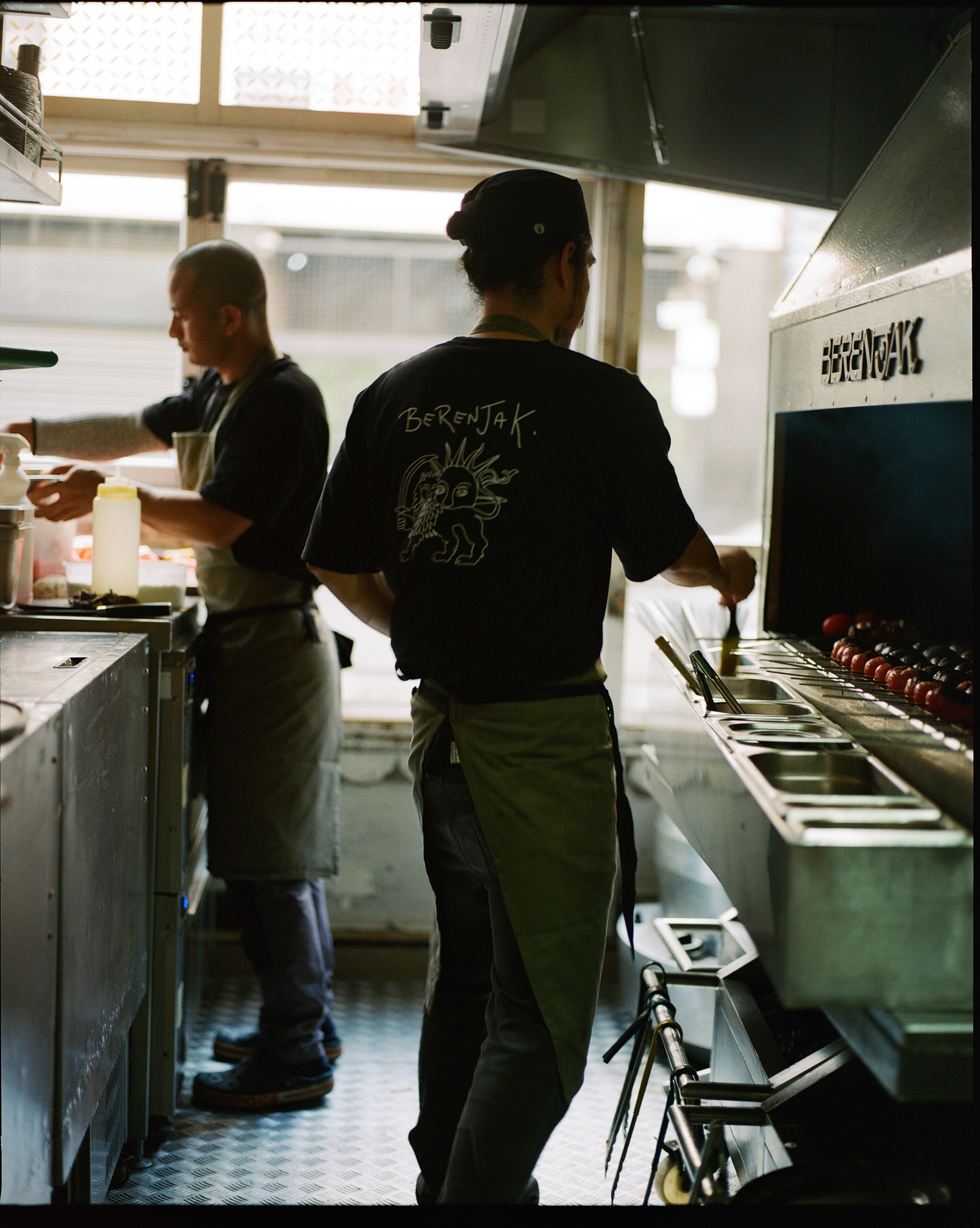
Every significant memory from my childhood involved food in some way… friends and family gathered around the Sofreh - usually on the floor with legs crossed - and in the center, a dome of crispy golden tahdig, a khoresht of some sort and a basket of fresh bread, herbs and cheese. As the food travelled from platters to plates and from plates to hungry bellies, arguments would turn into laughter and no matter what, someone was always waiting to top up your plate. It’s that feeling of home we hope to recreate at Berenjak
Kian Samyani – Founder
Our Classics
The menu at Berenjak is made up of our favourite Persian dishes, honing in on the must haves from one of the most ancient and richest cuisines in the world. Built on the foundation of Kian’s family recipes, passed down from generation to generation, our menu aims to showcase the best of Persian cuisine through a modern lens.
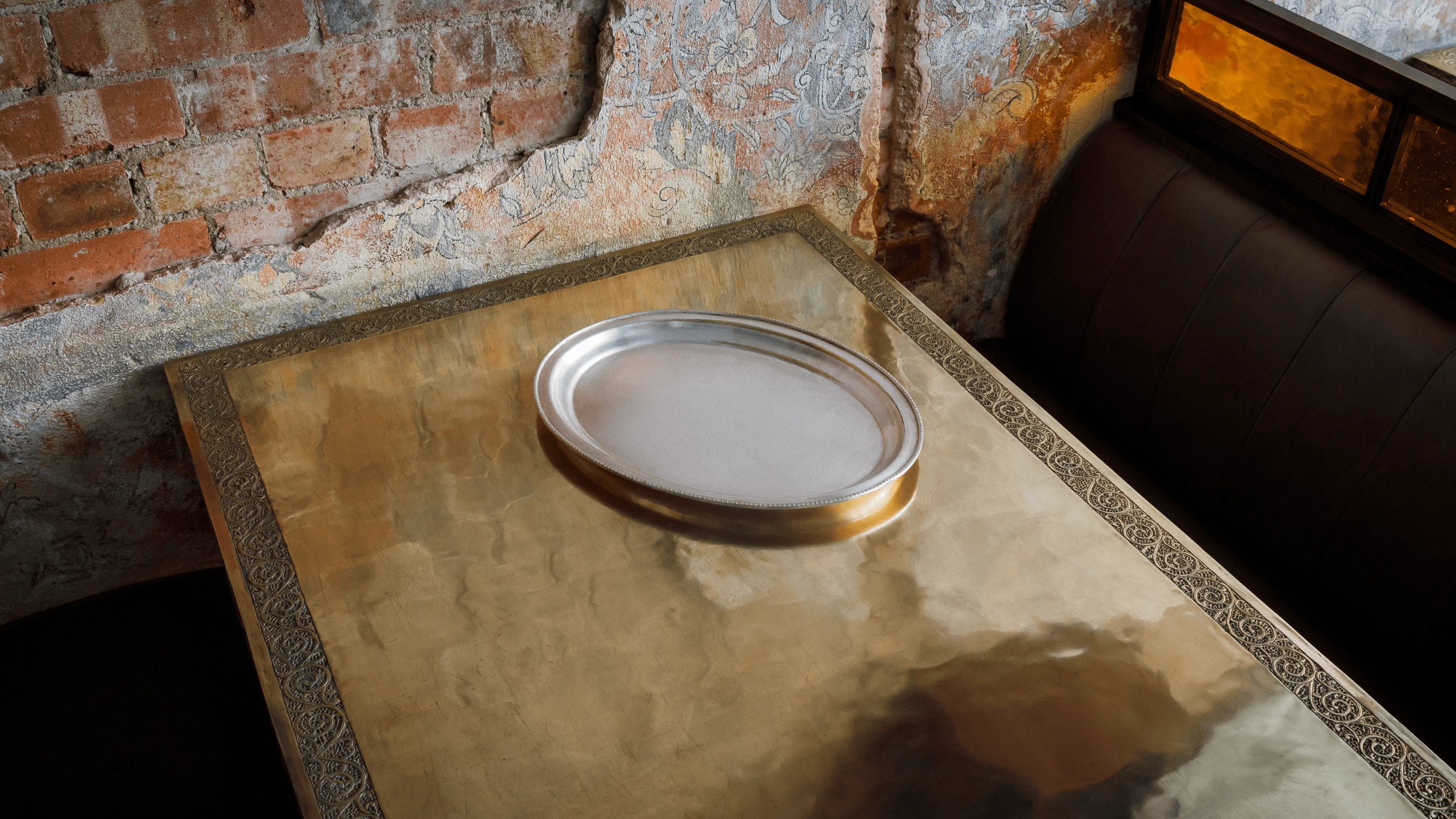
Koobideh Kabab
كباب کوبیده
Description
Most popular and loved Iranian kabab - an absolutely staple of Persian cuisine. Onion and black pepper complement ground lamb, which is then shaped around a skewer in its distinctive shape, and grilled over the mangal.
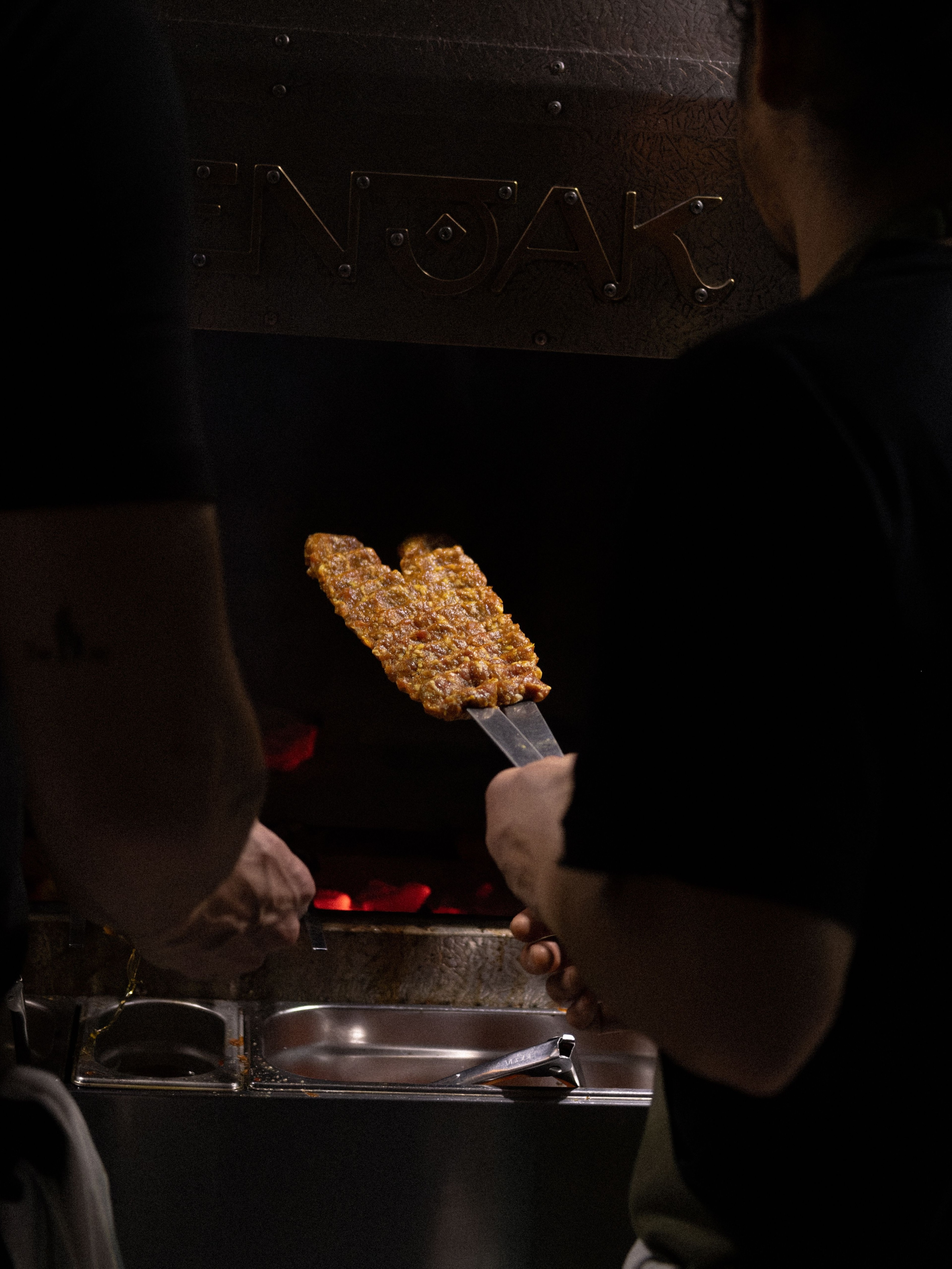
All over the country
Ingredients
Lamb, onion, tumeric, black pepper
Dishes

Sangak
سنگک
Description
Baked on a bed of hot river stones, sangak has a unique, uneven texture, and smoky flavour.
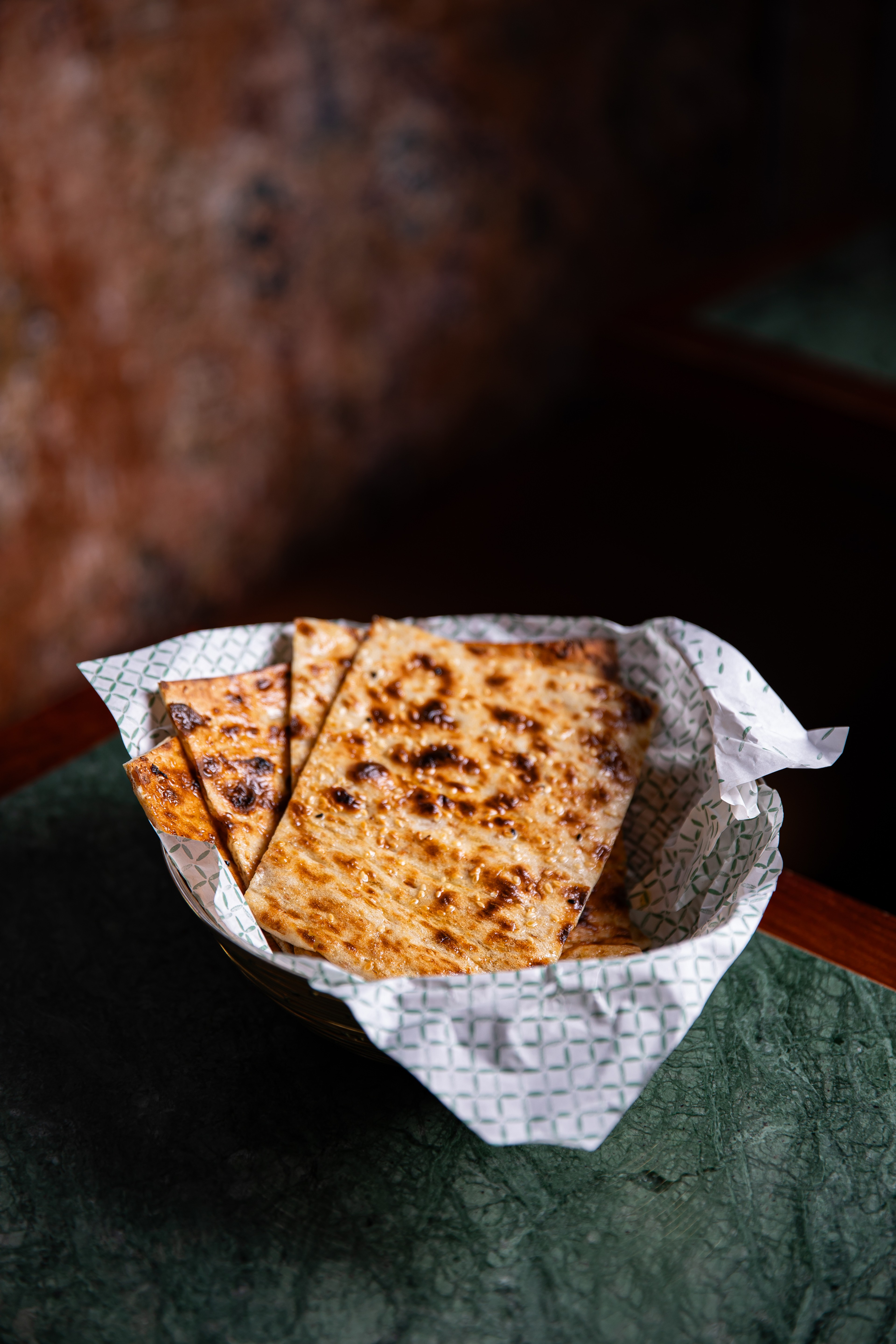
Bought fresh from bakeries daily all over Iran
Ingredients
Wholewheat wheat flour, salt, water, sugar
Dishes

Hummus
حُمُّص
Description
Hummus is found not only all over Iran, but all over the Middle East - where you might find it spelt homos, hummous, or any number of other variations. Ours is made with black chickpeas and sunflower seed tahini.
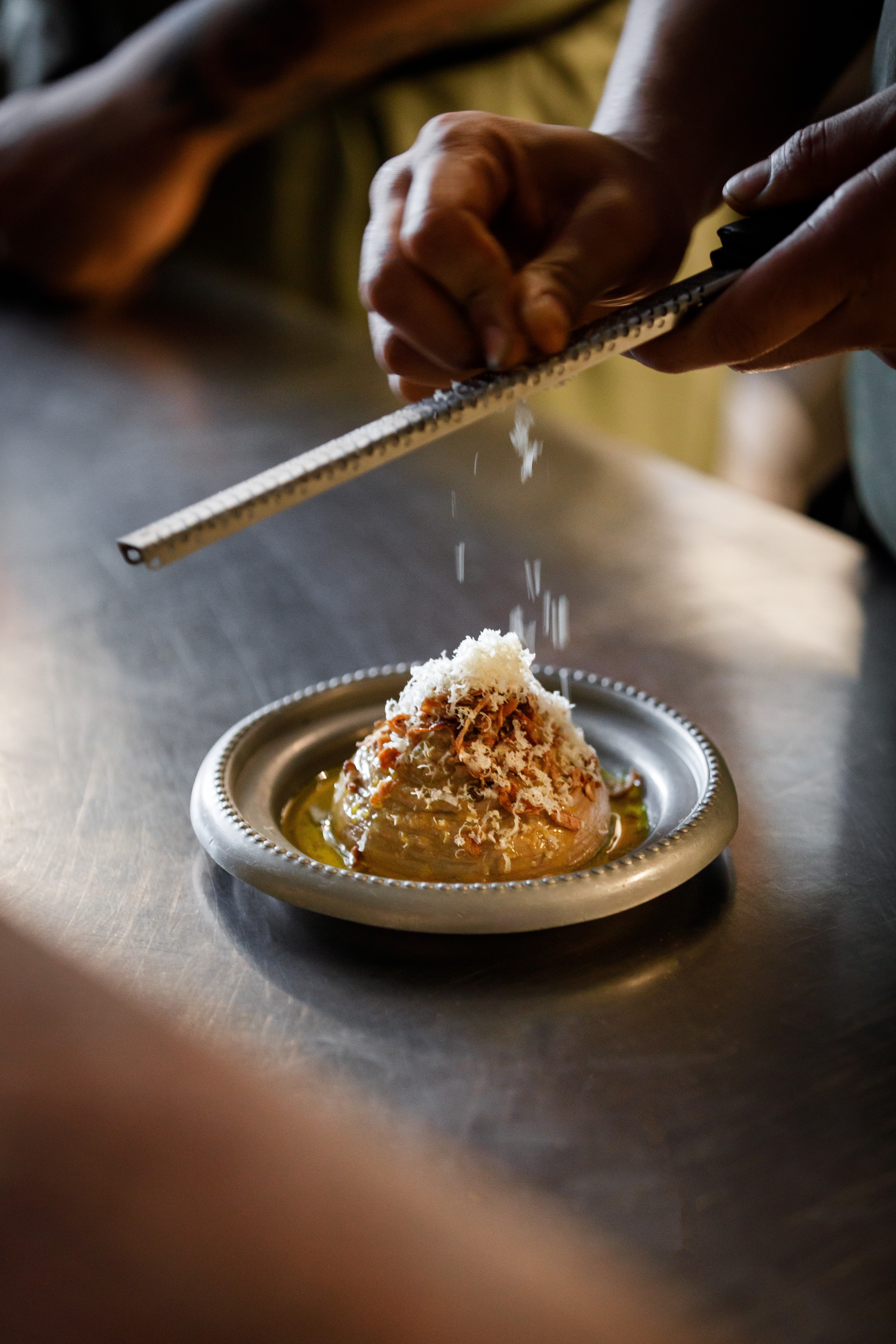
Whilst hummus isn't Persian in origin, it is widely eaten across Iran, introduced through trade routes.
Ingredients
Black chickpeas, sunflower seed tahini, garlic, lemon, green raisins, aleppo chilli, rapeseed oil, crispy shallots, sumac
Dishes

Watermelon Shumpine
Description
Named after the Iranian pronunciation of Champagne we imitate the wine's small bubbles in a playful cocktail made with one of Irans most popular fruits: watermelon.

Watermelon is popular across the country with its production centred in the Khuzestan region.
Ingredients
Vodka, red verjus, rose petal tea, watermelon fizz
Dishes

Jujeh Kabab
جوجه کباب
Description
Jujeh translates directly to 'chicken'. It's Iran's second favourite kabab, following the Koobideh. Every family has their own take on the marinade needed - and just like everyone else's, ours is a closely guarded secret.
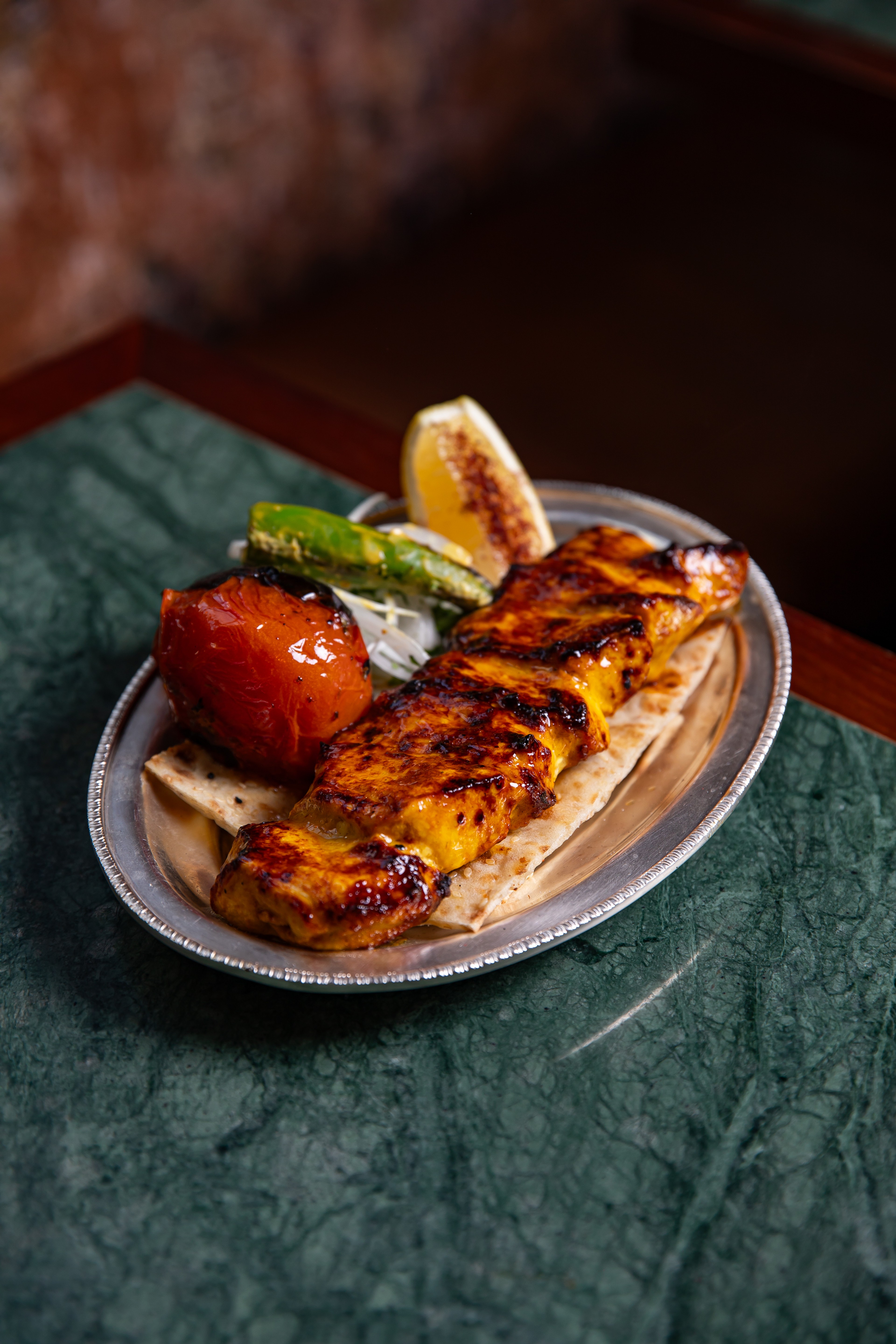
All over the country
Ingredients
Chicken breast marinated in saffron, lemon, yoghurt and tomato.
Dishes

Mast O Musir
ماست موسیر
Description
A creamy yoghurt dip mixed with finely chopped wild Persian shallots (musir). Best enjoyed with hearty Persian taftoon or sangak bread.
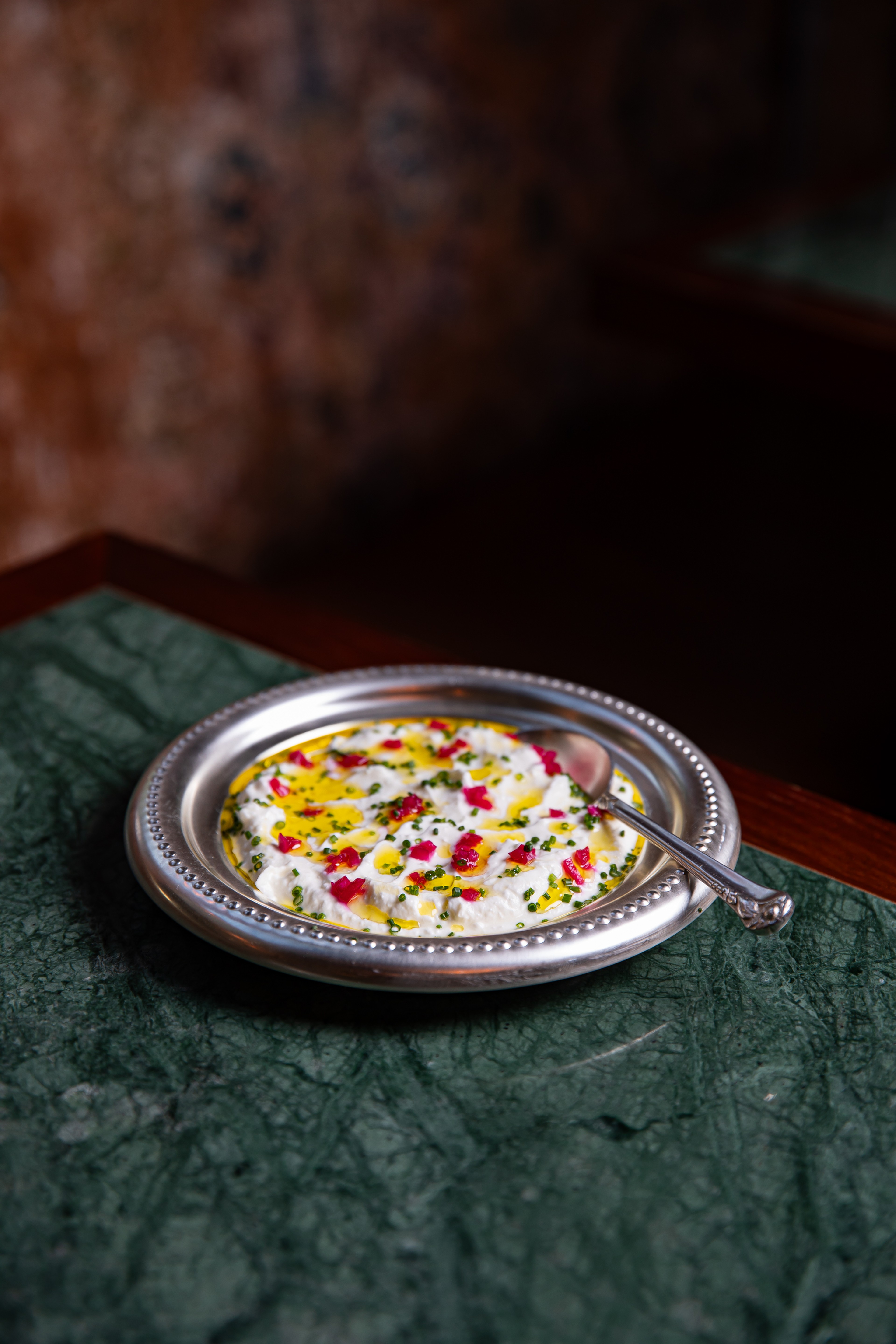
Hugely popular across Iran, especially in western and southern regions where wild musir is foraged in the Zagros Mountains.
Ingredients
Strained yoghurt, goats curd, Persian shallots and cold-pressed rapeseed oil
Dishes

Black Lime Sharbat
Description
Based on the traditional Persian sharbat which combines cordial of fruit, herbs or flowers with sparkling water and fresh sabzi. Ours is made made with sun-dried black limes for a deep, smokey flavour.
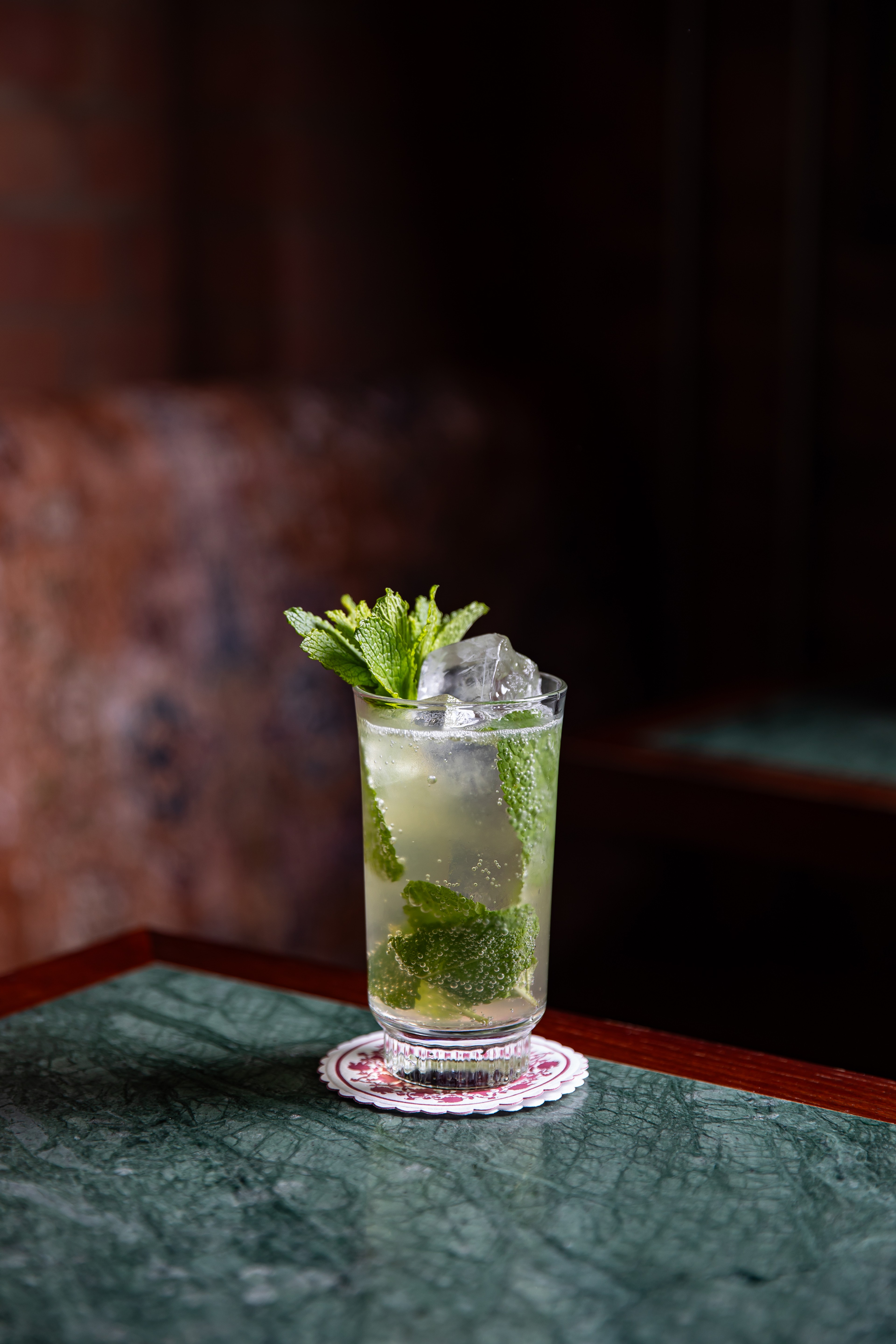
Popular across the country
Ingredients
Black limes, fresh lime juice, mint
Dishes

Ghormeh Sabzi
قورمه سبزی
Description
Iran's national dish - it is a deeply aromatic herb stew with parsley, coriander, dried limes, kidney beans, and slow-cooked lamb
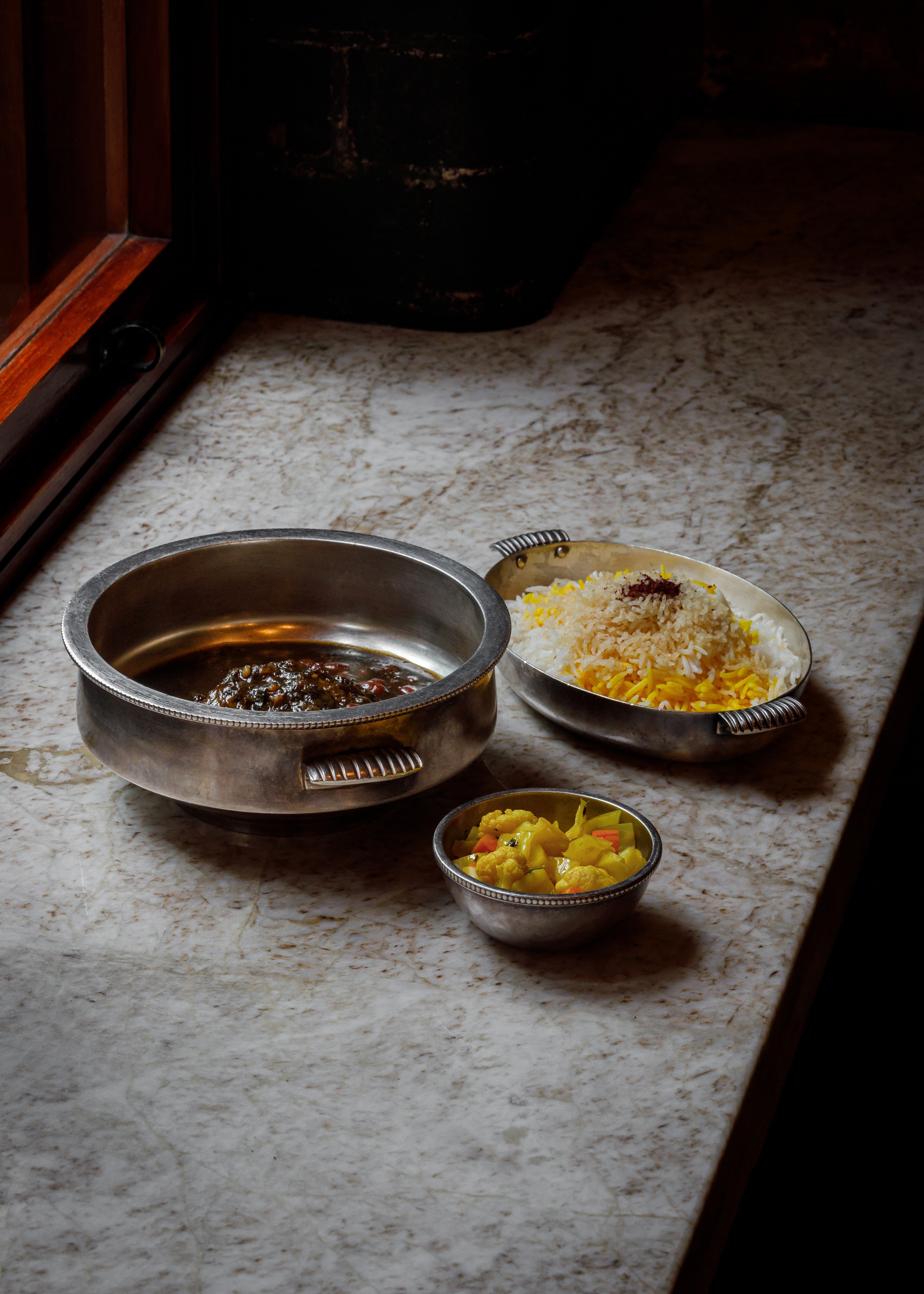
Ghormeh Sabzi originated in ancient Iran, possibly among the pastoral and agricultural communities of the Zagros and Alborz mountain regions, where wild herbs, lamb, and legumes were plentiful.
Ingredients
Lamb stew with kidney beans, dried lime and mixed herbs
Dishes

Black Truffle Olivieh
ترافل سیاه اولیویه
Description
A rich and creamy salad made with cooked chicken, eggs, potatoes, pickles, peas, and mayonnaise. We've added some black truffle to give it some extra depth.
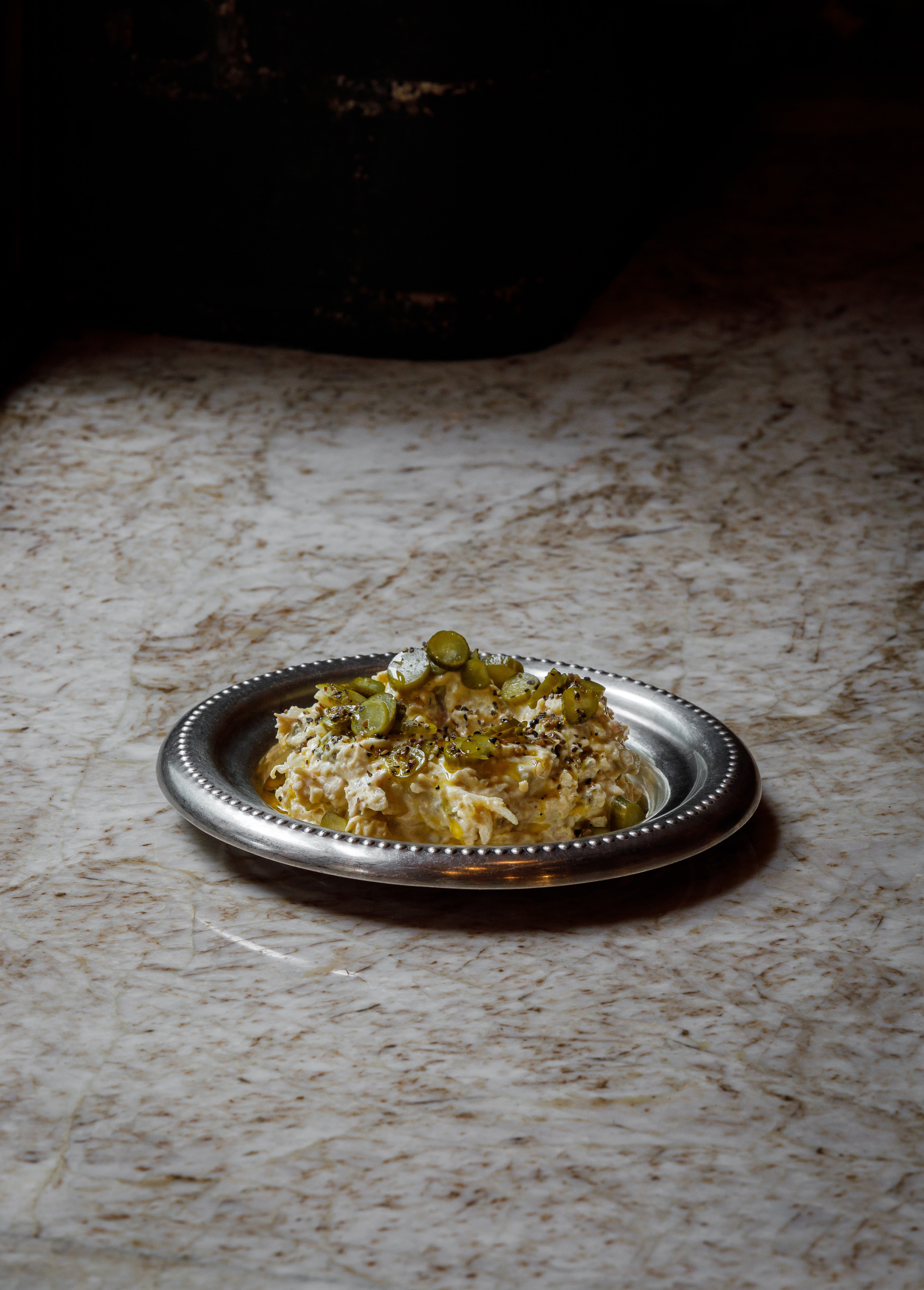
Popular nationwide, especially in Tehran and other urban centres.
Ingredients
Coal-cooked aubergine, garlic, tomato and St Ewes Farm eggs
Dishes

Chaee
چای
Description
A strong, black tea traditionally brewed in a samovar and served without milk, often alongside sugar cubes or dried fruits - a daily ritual that forms the basis of post-dinner conversations.
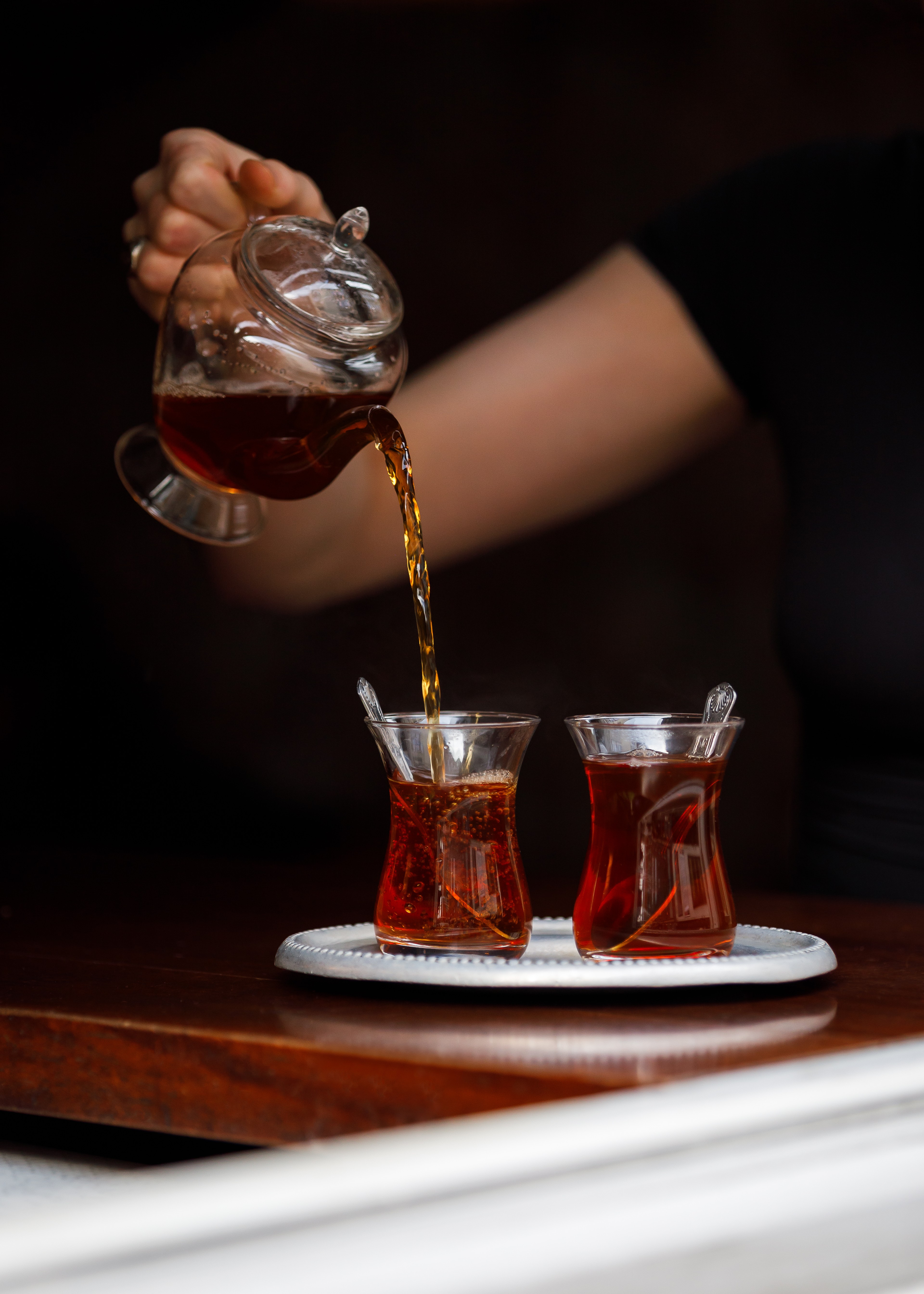
Enjoyed nationwide, but especially associated with northern regions like Gilan and Mazandaran, where tea cultivation thrives along the Caspian Sea coast.
Ingredients
Do Ghazal Ceylon Earl Grey Tea
Dishes

Ghalieh Mahi
قلیه ماهی
Description
A fragrant southern Iranian fish stew made with tamarind, coriander, garlic and chilli.
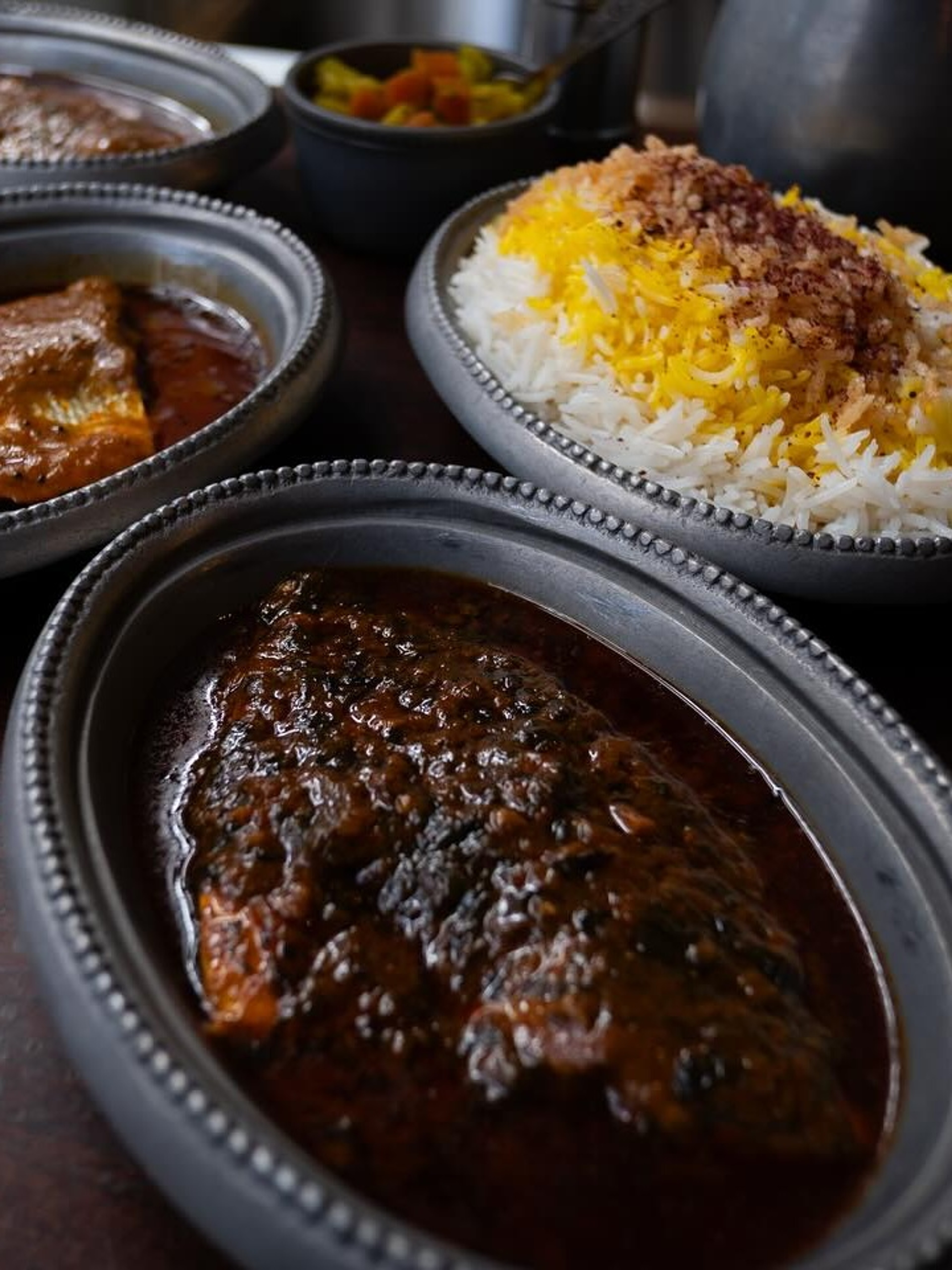
Found along Iran’s southern coastline bordering the Persian Gulf — mainly in provinces like Khuzestan, Bushehr, and Hormozgan
Ingredients
Bream fillets, green chilli, tamarind, tomato and pickled garlic
Dishes

Doogh
دوغ
Description
Originally created by Persian shepherds as a way of keeping milk drinkable, long before refrigeration systems, Doogh is the quintessential Iranian beverage

Across Iran, with strong links to the Azeri, Kurdish, and the Zagros regions
Ingredients
Salted yoghurt, soda, dried mint
Dishes

Mirza Ghasemi
میرزا قاسمی
Description
A smoky northern Iranian dish made with charred aubergine, tomatoes, garlic, and eggs, traditionally cooked over an open flame for a rich, earthy flavour.
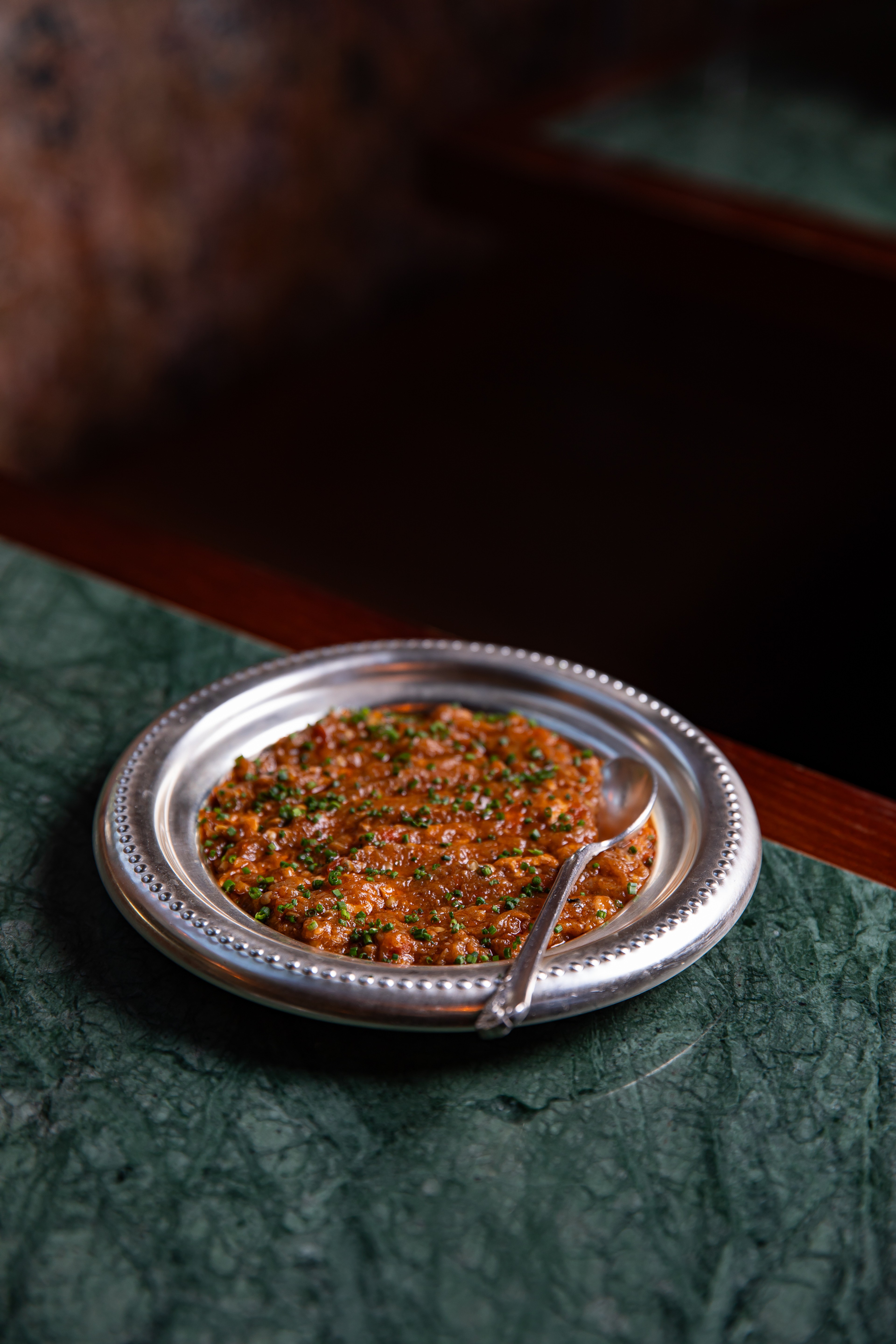
Originates from the Gilan province along the Caspian Sea, around the city of Rasht.
Ingredients
Coal-cooked aubergine, garlic, tomato and St Ewes Farm eggs
Dishes

Kashk e Bademjoon
کشک بادمجان
Description
A warm, savoury dip made from fried aubergine, garlic, onions, and kashk (fermented whey), typically topped with mint oil and walnuts.
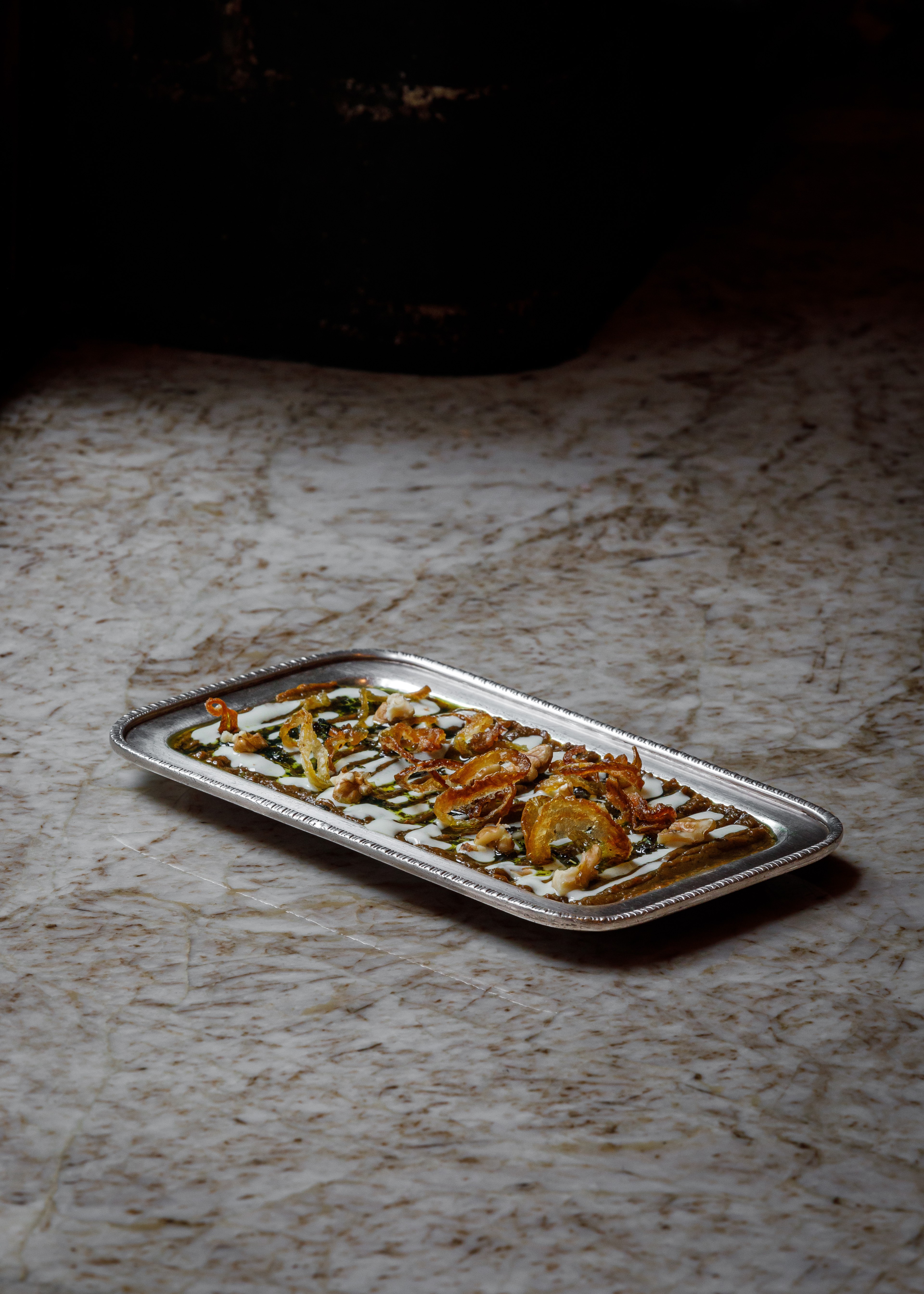
Found across Iran, particularly in central provinces like Isfahan and Tehran.
Ingredients
Aubergine, onion, garlic, dried mint, turmeric
TOPPED WITH: Whey sauce, fried onions, fried mint dressing
Dishes

Preserved Lemon Margarita
Description
Salt preserved lemons are a centuries old staple of Persian cuisine. For our margarita we distill the fruit into tequila to capture it's zesty aromatic flavour.
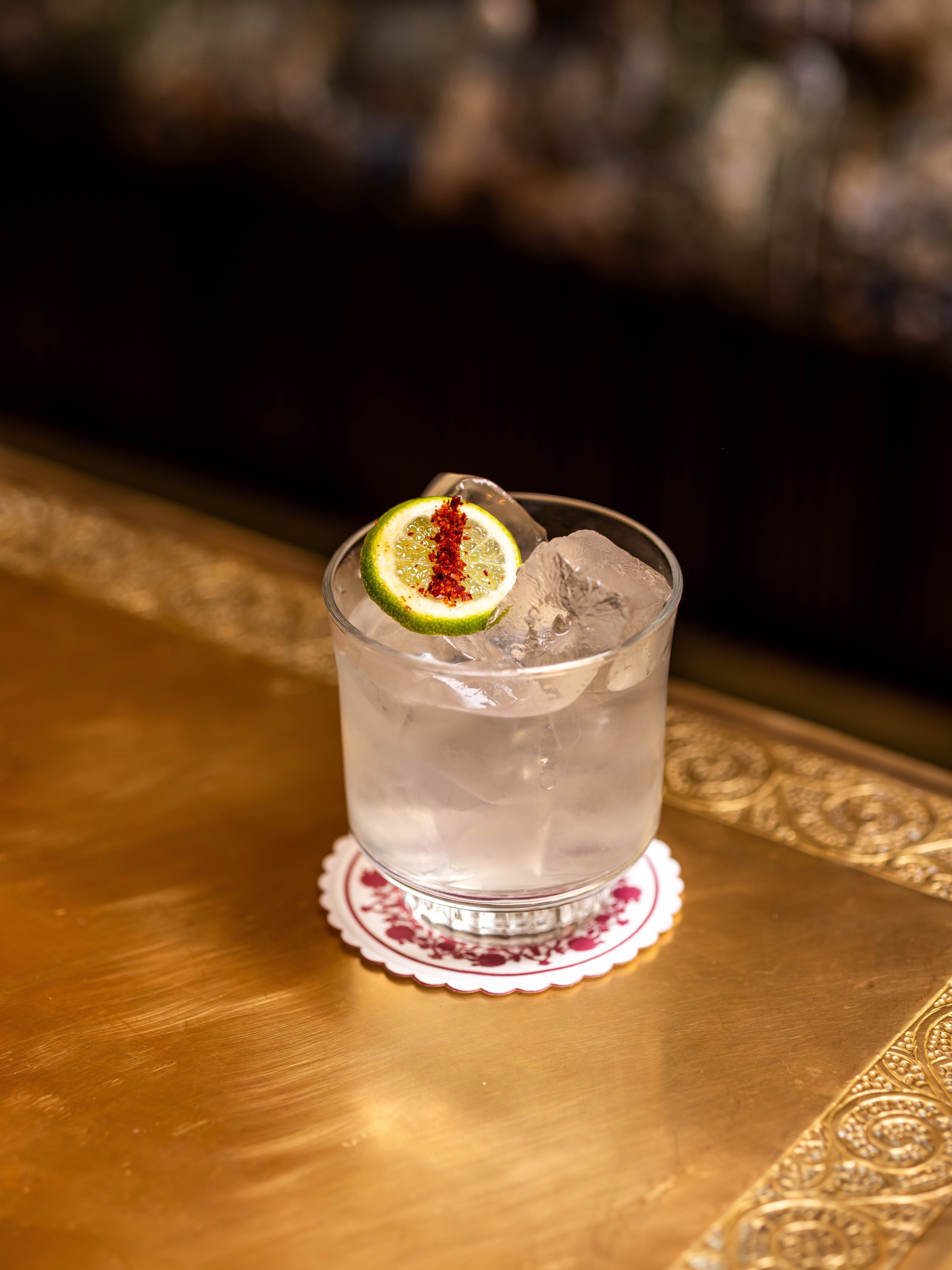
Ingredients
Mezcal, tequila, preserved lemon, lime.
Dishes









